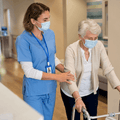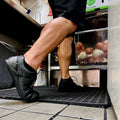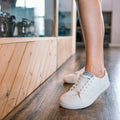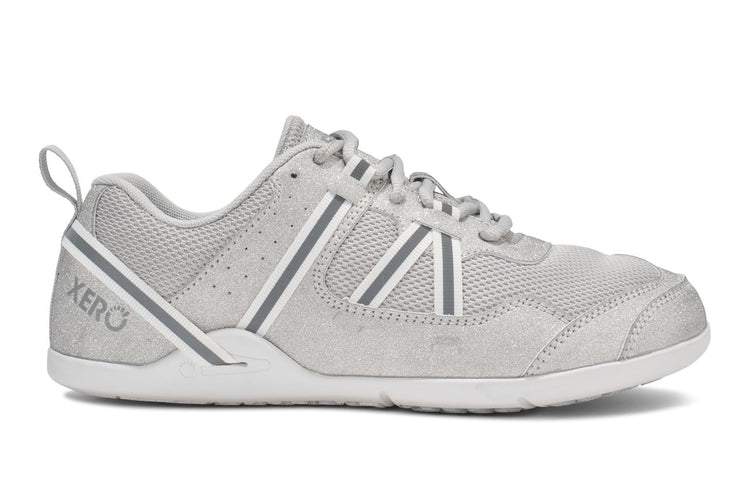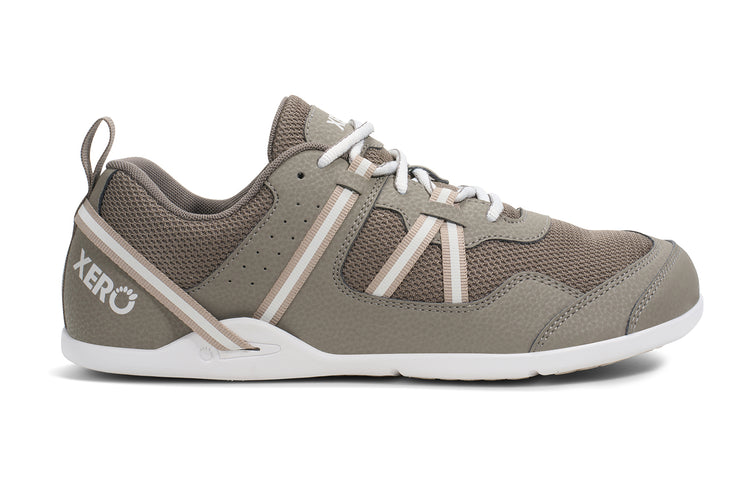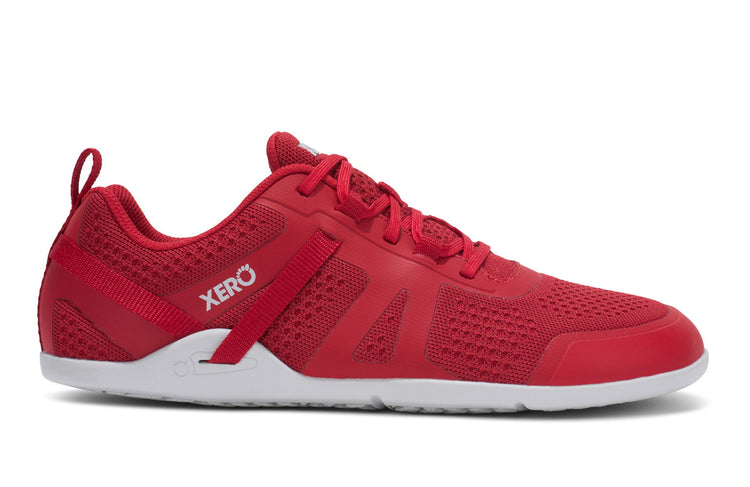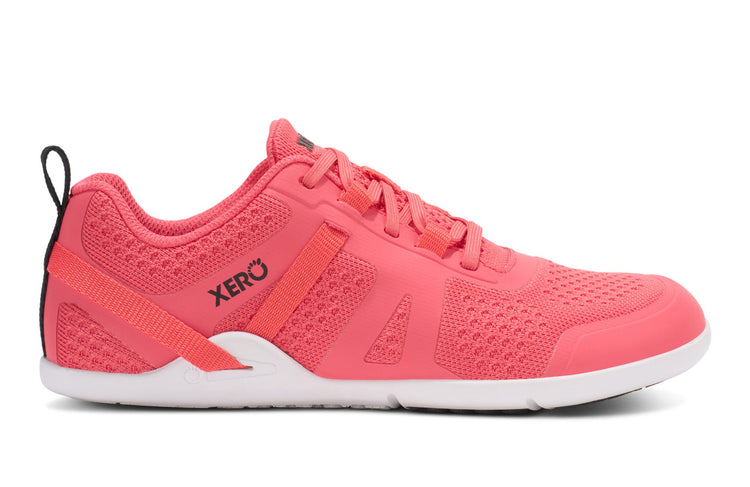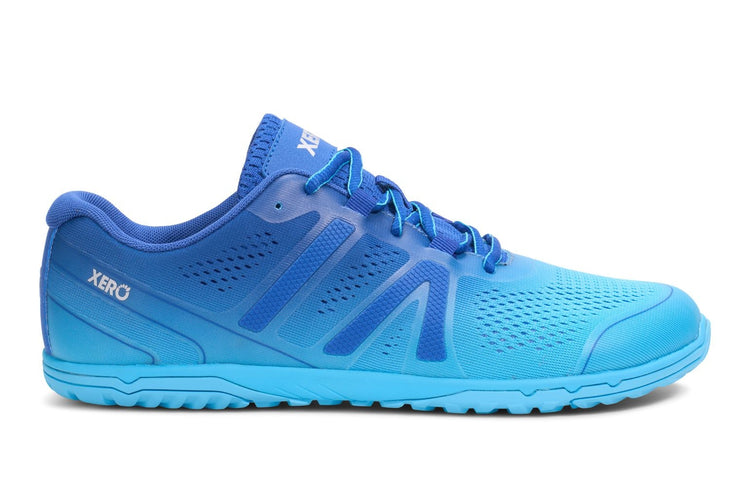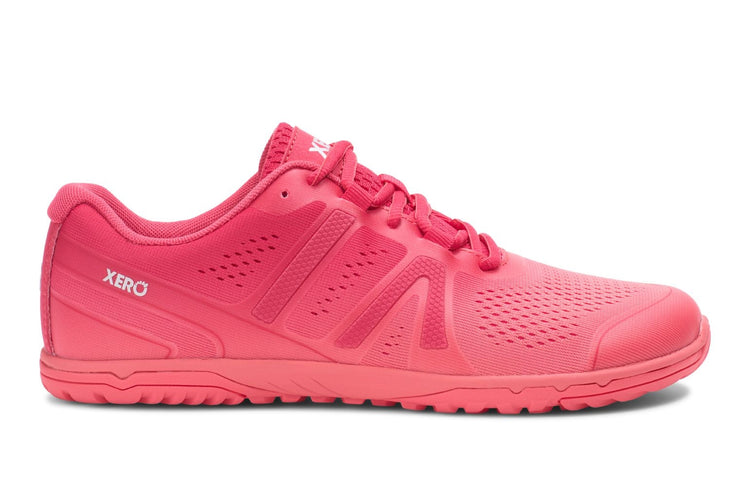latest News
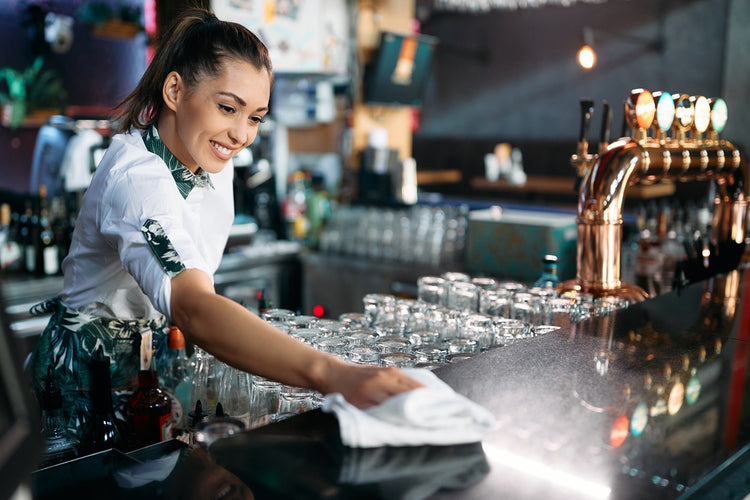
Best Shoes for Bartenders? Why You Should Try Barefoot Shoes
Working as a bartender puts you in the spotlight. Few other jobs let you blend socializing with maximizing your income the way bartending does. Whether you’re mixing signature drinks or chatting with the regulars, your primary job is taking care of others – and that starts with taking care of yourself. Working behind the bar requires you to spend long hours on your feet. You never know when you might need to pivot to reach a glass or rush across a wet floor to clean up a mess. You need to be on top of your game, and that means feeling your best. The shoes you wear while working can mean the difference between ending your shift with a smile on your face or wanting nothing more than to get off your feet. Is it time to re-evaluate your footwear? Keep reading to learn about the best shoes for bartending… shoes that will keep your feet in top shape. You might be surprised to discover that barefoot shoes may be your best choice. Which Shoes Work Best for Bartenders? Bartenders need comfortable shoes that allow them to move freely without worrying about slips and sore feet at the end of the night. As you may already know, bartenders often deal with foot discomfort and afflictions that can make it hard to flash your smile at a row full of customers. To maintain your feel-good personality in any bar or restaurant service job, you need shoes that provide all-day (or night) comfort. While it may seem like a tall order, the best shoes for bartenders have these essential qualities: Provide a high level of traction and stability Are lightweight and breathable, yet protect your feet from spills Allow for maximum movement and mobility Built with a zero-drop heel that encourages good posture Are stylish and match your aesthetic The best bartending shoes have these features, and barefoot shoes check all of these boxes. Why Are Barefoot Shoes Better than Normal Shoes? You know that you’ve found good shoes for bartending when you forget that you’re wearing them… even at the end of a long shift. Whether you’re running errands during the day or working behind the bar at night, barefoot shoes will meet your comfort, style, and performance needs. But what exactly are barefoot shoes? Barefoot shoes, also known as minimalist shoes, mimic the experience of walking barefoot while still providing some protection, letting your feet do what's natural — bend, flex, move, and FEEL the world. Here are a few ways barefoot shoes are different from conventional shoes, and how they can help bartenders move and feel better. Zero Drop One of the biggest differences between barefoot shoes and “normal” shoes is that barefoot shoes are made with a low-to-the-ground design that lets your feet get feedback from the surfaces you’re walking on. That feedback is what lets you make the automatic adjustments needed to stay surefooted and well-balanced. Barefoot shoes are “zero drop” meaning the heel of the shoes is level to the midfoot. The zero drop design allows the entire foot to lay flat on the ground beneath you, which in turn allows you to enjoy your natural, proper posture. Wider Toe Box Barefoot shoes also have a wider toe box that allows your feet to have room to rest comfortably as you stand on your feet for hours. Shoes that have a wider toe box also prevent pinching as you stand on tiptoes to reach glassware or spin around to greet a new customer. No Excessive Padding Conventional shoes often have thick soles and excessive padding that don’t allow your feet to engage in natural movement – it’s like wearing a cast on your foot, restricting your foot’s range of motion, reducing joint mobility, and causing the muscles to weaken over time. Barefoot shoes don’t provide any external arch support – it may seem counterintuitive, but that feature is what allows bartenders to build foot strength just by moving around during their shift. Closing Out: Barefoot Shoes for Bartenders Bartenders need shoes that will help them get through long shifts that require them to be constantly on their feet and moving around. With barefoot shoes, you may experience more comfort and energy, which will let you better do the job of helping everyone you serve to have an enjoyable night. Thousands of men and women have made the switch to wearing barefoot shoes. Some of the bartenders who love wearing their Xero Shoes share their thoughts: “I love the Kona shoe. I don't like to wear socks so I was looking for an easy slip-on slip off situation and these are super comfortable without socks. I wear them at my bartending job and my feet don't hurt after a full shift. They run true to size lengthwise but are very spacious around the foot. I initially thought they were too big, but my feet weren't used to having room to breathe. They do provide a barefoot feel because of how flat and thin the sole is, but they look and feel high quality. They look great with pants and shorts. I get compliments every time I wear them.” “I stand serving and bartending all day, these shoes are magic, I feel no discomfort in my lower back all day, I cannot recommend these more! They should be worn by anyone who works a service job of any kind, I bought a second pair literally the next day after I tried these. I find they’re almost better than being barefoot because you have external protection for your feet. Regardless, extremely comfortable shoe, can’t recommend them enough. Best not just shoes but any clothing or accessory I’ve ever bought!” “These shoes are actually nonslip! I’m a bartender and I need total nonslip not 70%. I was nervous to try yet another shoe but these totally did the job! At first, I wasn’t a big fan of the look but they’ve grown on me and now I think they are cute. Lastly, they are barefoot shoes! I am so satisfied finally finding a shoe I can wear all day that helps me keep my feet healthy and strong.” “Thank you for making these! As a high volume bartender, I need to be constantly moving fast on my feet for 8 - 10 hours non-stop. I've been wearing barefoot shoes outside of doing restaurant work for a few years now so it's actually hard to go back to cushioned work shoes. Having minimalist nonslip shoes like these Prio SR is something I've been looking for for quite awhile. Awesome stuff!” “I have been on a 15 year journey to find the perfect bartending shoe and I have found it! My feet, legs and body are just normal tired after an 8 hour high volume shift at a music venue; rather than achy and sore as hell half way through my shift. I feel stronger and have more agility in my movements than a running shoe or any of the others I have tried through the years. The adjustment period was difficult but I felt better right away. My feet and legs feel better. I can sleep after work without discomfort. I wake up the next day and instead of hobbeling, I'm walking and feel great! Huge difference! Thank you Xero I didn't think it was possible!” Bartenders, Try the Prio All Day-SR The Prio All-Day SR from Xero Shoes is the perfect slip-resistant pair of barefoot shoes for bartending and all-day comfort.
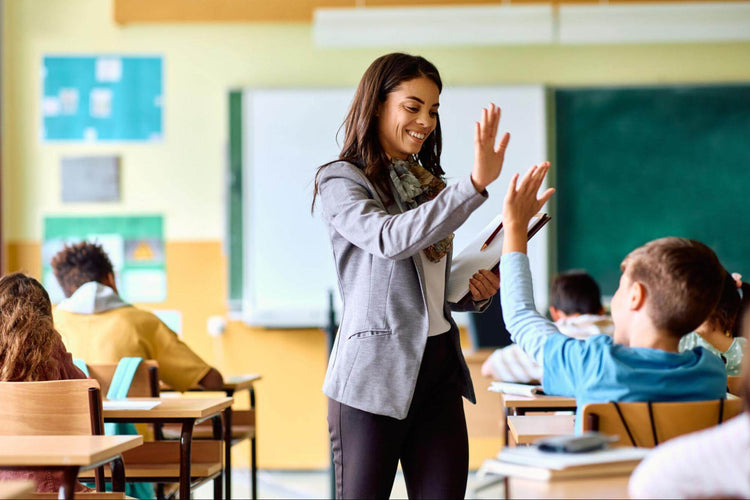
Are Barefoot Shoes the Best Shoes for Teachers? Why It’s Time to Go Minimal
We’ve heard from countless teachers roaming their schools’ hallways that switching to so-called “minimalist” or “barefoot” shoes has been the key to feet that feel better all day long. Walking the aisles checking homework, pacing while teaching lessons, or just standing in the hall while kids come and go can all contribute to tired, achy feet. The reality is that teachers work 50+ hours a week, and spend much of their day standing up and moving around, which can put big demands on their feet. Teachers understand the importance of choosing comfortable shoes, but the shoes they think offer the most comfort may actually be one of the causes of discomfort. Keep reading for the best shoes for teachers, and the reasons to make the switch over to barefoot shoes. Which Shoes Make Sense for Teachers? What exactly is it that makes one shoe more comfortable than another? To answer that, we must consider the day-in, day-out activities and responsibilities of teachers, as this understanding reveals the features that will offer the most long-term comfort for your feet. Ultimately, the best shoes for teachers should… Allow you to move efficiently around the classroom and in the hallways Offer comfort even when you’re on your feet all day, so you can focus more on your students and your lesson plans and less on your tired feet. Be breathable, which is indispensable for people who are active and on their feet throughout their day, like teachers. Shoes with proper ventilation ensure your feet remain comfortable and dry. Excess moisture can also lead to blisters–another reason to look for breathability. Be lightweight, so teachers can avoid the fatigue that comes with wearing heavier shoes. Be flexible, so that your feet can move naturally, whether you’re walking the halls or pacing during lessons. Provide adequate toe space. Teachers need shoes with ample toe room to allow the toes to move freely, preventing cramping while accommodating various foot shapes and sizes. Look professional and meet your school’s dress code. Comparing Normal Shoes with Barefoot Shoes in the Classroom Teachers who experience soreness or fatigue throughout the day may have their shoes to blame. There are a few issues that “standard” or “conventional” shoes may cause: The excessive padding mutes the feedback the nerves in your feet send to your brain, interfering with mobility. The overreliance on padding could weaken the feet over time. The raised heel can affect your posture. Conventional shoes typically contain a narrow toe box that squeeze the toes, which can lead to discomfort and other foot issues Barefoot shoes, on the other hand, have a wider, foot shaped toe box and non-elevated heel. Conventional shoes often have a narrow, pointed toe box that squeezes toes together, ultimately leading to podiatry issues and balance problems. Barefoot-type shoes, on the other hand, boast a wider, foot-shaped toe box to allow toes to spread naturally, which may provide better balance, mobility and agility. In addition to an uncomfortable pointed toe box, normal shoes have a raised heel, which negatively affects posture and can put strain on the ankles, knees, hips and back. Barefoot shoes have a non-elevated heel (also “zero-drop”) that can help improve posture. This means that the heel and forefoot are the same height, allowing the feet to be in a more natural position. The thick soles and excessive padding of conventional shoes don’t allow your feet to move or toes to spread – it’s like wearing a cast on your foot, restricting your foot’s natural movement, reducing joint mobility, and may cause the muscles to weaken over time. Barefoot shoes don’t provide any external arch support. It may sound counterintuitive, but this design allows you to build strength just by walking and moving around. This helps your feet eventually become strong enough to act as their own support system. To summarize, barefoot shoes help teachers to… Move naturally Experience better mobility, balance, and agility that comes from the foot being in a more natural position. Strengthen the feet over time so they become their own support system Teachers, It’s Time to Make The Switch to Barefoot Shoes To get through the school year in comfort, you need footwear that will enable natural movement, so you can spend hours comfortably on your feet. Barefoot shoes provide teachers the comfort and support they need to be at their best. They are so comfortable and lightweight, many teachers forget they’re even wearing them! Teachers Love Wearing Xero Shoes! If you spend most of the hours of the day on your feet, you’ll want to buy a pair of Xero Shoes. But don’t take our word for it! Here’s what teachers have to say about their Xero Shoes: Xero shoes have been life changing… I am an elementary teacher and on my feet for 5-7 hours per day. The best pair of boots I’ve ever had. So beautiful! I’ve played in the snow and run in the rain with these boots. I’m a kindergarten teacher so I spend at least an hour outside every day even if it rains or snows…these boots are great. Only at -10c my soles of my feet were feeling bit cold. I am so happy I bought these shoes! As a teacher, I wanted a comfortable shoe that was dressier than my xero sneakers, but just as comfortable. These shoes fit so nicely and easily go with dress slacks or jeans. I bought the Dillon slip-ons in both available colors (black and gray), and in my usual Xero size (I have Prios, Aptos, HFS, and the lace-up Dillon). They fit perfectly, and Xero has nailed the look with these. I just wore them all day right out of the box and there’s not a single complaint I could make. I imagine that these will be my daily go-tos, and I am curious to see how they wash when the need arises. PLEASE make these in navy! I’m a teacher whose school color is navy. I wear a ton of navy logo-embroidered shirts, polos, etc. with khakis to work in, and would absolutely love to be able to rock some navy Dillons. This is my 4th pair and I’m a fan! 3 athletic shoes and one pair of sandals. I’m new to the barefoot shoe club, and feel that my balance, stride and foot muscles are improving. Standing flat works wonders for one's posture and back. I’m a 62-yr-old teacher looking forward to healthy strong feet! Find Your Next Pair of Shoes We have a wide selection of minimalist dress and casual shoes for teachers to fit your school’s dress code. Browse great styles for men and women. Dress Shoes For more formal dress codes Phoenix leather Mika Casual Shoes Pair with nice jeans or slacks The Dillon The Glenn Kelso Multi-purpose shoes For the laid back dress codes or casual friday. Zelen Nexus Knit Prio Prio Neo
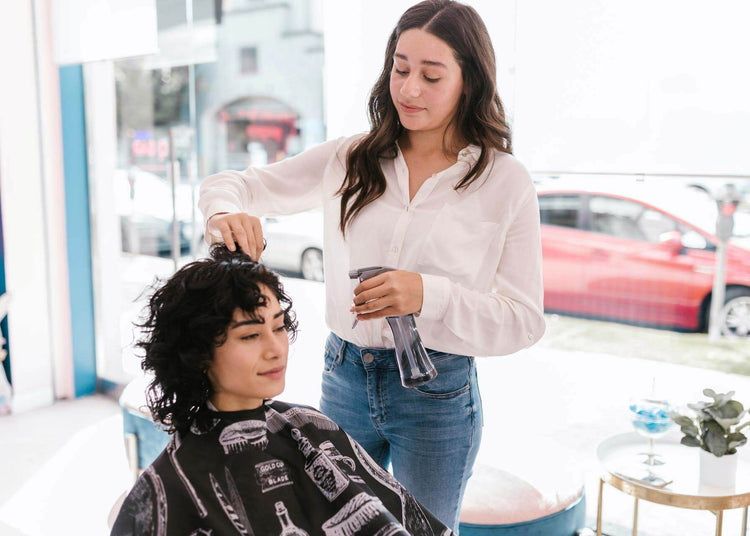
Smart Hairdressers, Stylists, and Barbers Have Switched to Minimal-Style Shoes
If your feet don’t feel as good at the end of your shift at the salon or barber shop – plus errands, social life, away from work – as they did at the start… then it’s time to reconsider your choice in footwear. And what if the best pair of shoes for all-day comfort is the opposite of what “Big Shoe” has been pitching? What if all the features they say should help you actually get in the way or even cause the problems they claim to cure? We realize this may sound counterintuitive (or even come off as crazy). However, thousands of people who work on their feet have made the switch to barefoot shoes. Read reviews of barbers who made the switch to Xero Shoes and never looked back: All the features I love about Xero Shoes plus more durability and slip-proof traits make it the perfect shoe for work. The professional style makes them great for more formal environments. In this post, you’ll discover how switching to barefoot shoes can help you enjoy healthy feet at the salon, at home, or anywhere. What Shoes Make Sense For Hairstylists? Before we discuss barefoot shoes and the differences that can help hair stylists, let’s look at what shoes make sense for people who work on their feet all day for a living. Working as a hairstylist, you need high-quality footwear that will… Allow you to move efficiently on unforgiving salon floors. Offer a comfortable fit for long days. Provide traction and stability. Shoes must have good grip or tread for slip resistance. Be extremely durable. Be easy to clean and maintain. Offer protection from various accidents or spills that can occur in salons or barber shops. Look professional in a salon or barber shop setting (of course, this varies on your salon’s dress code). Why “Normal” Shoes For Hairdressers Don’t Compare Before discussing the benefits of barefoot shoes for hairstylists, let’s look at the problems “normal” shoes can create: To summarize, “normal” shoes… Have a narrow, pointed toe box. This squeezes your toes together, leading to foot problems and balance issues. Have a raised heel, which negatively affects your posture, putting strain on your ankles, knees, hips, and back. Have excessive padding, which mutes the feedback the nerves in your feet send to your brain… making you less stable and confident as you move around the shop. Have stiff soles, limiting your feet’s natural movement. Once again, this can affect your balance and agility. Are heavier compared to barefoot shoes. The weight of normal shoes will slow you down over the course of a long workday. The things listed above can negatively impact your health and well-being over time. How Do Barefoot Shoes Compare? For hairdressers, stylists, and barbers, barefoot shoes (also called “minimalist shoes”) address the issues that normal shoes can bring about. Barefoot-style shoes… Have a wider, foot-shaped toe box, which allows your toes to spread naturally. Are flexible and allow for natural movement. Have a non-elevated heel (also called “zero-drop”), to help improve your posture. Are low to the ground for balance, mobility, and agility. Allow you to strengthen your feet and become their own support. Are lightweight — so lightweight, that many salon or barber shop employees forget they’re wearing them (and that’s not an exaggeration)! 3 Fantastic Benefits Hairstylists and Barbers Get Wearing Barefoot Shoes Here are three significant benefits that hairdressers and barbers will get when they make the switch to barefoot shoes: They Are (Extremely) Lightweight Busy salon or barber shop workers deal with walking around for long periods of time. Wearing heavier shoes will weigh you down throughout the day. “Normal” shoes tend to be heavier, while barefoot shoes are lightweight. For salon workers, retail workers, or anyone who works on their feet, barefoot shoes are the ideal choice. With minimalist-style shoes, you can be quick and light on your feet instead of dragging heavy shoes around during a long shift. How lightweight are they? We’ve heard many stories about people forgetting to take their shoes off when they come home from off after a long shift. They Have Zero Heel-to-Toe Drop Traditional shoes place your heel higher than the ball of your foot. This is known as a shoe’s “heel-to-toe drop.” The heel-to-toe drop for what some consider “normal” shoes typically range from 8-12 millimeters, however, even a small drop is a problem. Why is this bad? This “drop” shifts your center of gravity forward, and adjusting to that can put a strain on your body, including the back, knees, ankles, and hips. Barefoot shoes, however, have zero heel-to-toe drop, also referred to as “zero drop”. This means there is a uniform sole height without any difference between the heel and the toe. Zero-drop shoes mimic the natural barefoot position on a flat surface, allowing for more natural posture, which can take the strain off your ankles, knees, hips, and back. Salon and barber shop employees will benefit from better alignment and balance throughout long shifts on their feet. Your Feet Become Their Own Support While you may think added support is an important feature for your footwear, it may actually be taking away from your health. The issue with “normal” shoes with padding is that they restrict your feet from moving and your toes from spreading out. Why is this bad? Think of it like wearing a cast — when movement is restricted, your joint mobility is reduced, causing the muscles to weaken. You can apply this analogy to wearing “normal shoes”, which can greatly restrict your movement. By comparison, barefoot-style footwear purposefully does not provide external arch support. This feature helps you to develop foot strength to support the arch naturally. Research from Dr. Sarah Ridge concludes that merely walking in barefoot shoes builds foot strength as much as a foot-strengthening exercise program would provide someone. So, as a hairstylist, you can build foot strength just by walking around in minimalist shoes as you go about your day at work! Barefoot shoes have a flat sole with no built-in support and no extra midsole foam that breaks down unevenly, making them the best shoe if you think you do want or need an insole. Xero Shoes: Find The Perfect Shoes for You If your feet are sore from standing up all day, we invite you to try Xero Shoes. They are reliable and comfortable shoes for hairstylists, ideal for long days at the salon. Try our slip resistant Prio All-Day SR, or any of the other barefoot-inspired shoes and boots that are perfect for anyone working on their feet! [product_category category="prio-all-day-sr" columns="2"]
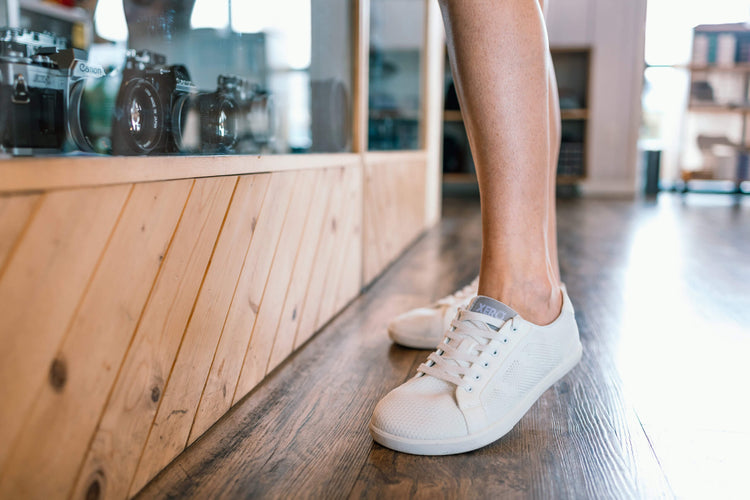
Best Shoes for Retail Workers? Try Barefoot Shoes
Going Minimal in Retail If your feet don’t feel as good at the end of a long shift – plus errands, social life, and the rest of your day – as they did at the start… then you’re wearing the wrong shoes. And what if the best shoe for all-day comfort is the exact opposite of what “Big Shoe” has been pitching? What if all the features they say should help you actually get in the way or even cause the problems they claim to cure? We’ve heard from thousands of people working on the retail floor that switching to “barefoot” or “minimalist” shoes has been the secret to happy, healthy feet. I know that can sound counterintuitive or even crazy, so don’t take our word for it. Here’s what some retail workers have to say about their experience with barefoot shoes: “I have had my Xero Shoes Prio Suede shoes for a little over 2 months. I work retail and walk on hard surfaces for 5 hours a day. I am 75 and this shoe has allowed me to make major gains in total flexibility particularly in my feet/ankles, knees and hips, while assisting in correcting my neck forward position and back posture. They are extremely comfortable and I almost don't want to take them off when I get home. My feet used to ache after work and now they feel great!” “I work in a large retail establishment and am on my feet and moving on concrete 8-9 hours daily. I have tried all the cushy over-supported shoes to no avail - dealing with foot pain and blisters. I met a customer in the store wearing Xero shoes and stopped him and asked about them. This led to me purchasing my first pair of Xero shoes. I am 7 days into my Xero experience and ALL my foot pain is gone!! The wider toe cavity was what my feet needed. Thank you Xero. I have already ordered my second pair. I think this is the beginning of a life-long friendship.” Let’s discuss what retail workers should know about barefoot shoes, and how they can help you enjoy healthy feet at work and at home. What Shoes Make Sense For Retail Workers? Before exploring the benefits of wearing barefoot shoes, let's first look at what shoes make sense for retail. As a retail employee, you expect a lot out of your footwear. You need high-quality shoes that will… allow you to move efficiently around the store. offer comfort for your long shifts whether you are serving customers, cleaning, carrying stock, and more. provide traction and stability, with good grip for slip resistance. be extremely durable. You need sturdy shoes for long hours, multiple days in the week. offer protection for your feet. Your shoes must protect your feet from various accidents or spills that occur in retail stores. look professional (that, of course, varies depending on where you work) be easy to clean and maintain (if your job gets messy) Why “Normal” Shoes Aren’t Cutting It For Retail Workers Before diving into the benefits of barefoot shoes for retail employees, it’s worth considering why someone would ditch traditional shoes. “Normal” shoes… Have a narrow, pointed toe box that squeezes your toes together, which can lead to foot problems and balance issues. Have a raised heel, which negatively affects your posture, putting strain on your ankles, knees, hips, and back. Have stiff soles which limits your feet’s natural movement, again impacting balance and agility. Have excessive padding, which mutes the feedback the nerves in your feet send to your brain… which interferes with mobility. Weaken the feet over time and lead to a reliance on external support, rather than allowing the feet to strengthen and become their own support system. Are heavier, which will weigh you down over the course of a day. All of these things can negatively impact your health and well being. What Retail Workers Should Know About Barefoot Shoes Barefoot shoes address the issues mentioned above. This type of shoe design… has a wider, foot-shaped toe box to allow your toes to spread naturally is low to the ground for balance, mobility, and agility has a non-elevated heel (“zero-drop”), so it doesn’t mess with your posture is flexible and allows for natural movement allows your feet to strengthen and become their own support is so lightweight, that many retail employees forget they’re wearing them! 3 Benefits Retail Workers Will Get With Barefoot Shoes Here are three great benefits retail workers can get wearing barefoot shoes: They are “Zero-Drop” Traditional shoes often have a significant difference in height between the heel and the toe. This is known as a shoe’s "heel-to-toe drop." This drop can be as much as 12 millimeters or more for “normal” shoes. Even a small “drop” shifts your center of gravity forward, and adjusting to that can put strain on your ankles, knees, hips and back. Barefoot shoes, however, have a uniform sole height without any variation between the heel and the toe (also known as “zero-drop”). These shoes allow retail workers a more natural posture and gait, promoting better alignment and balance as they work long hours on their feet. They Are (Very) Lightweight “Normal” shoes tend to be heavier and more cumbersome for retail workers who spend several hours standing and walking around. After a while, you may get used to this. But when you switch to a barefoot shoe, the difference becomes vividly clear. Barefoot shoes are lightweight. This makes them an ideal option for retail workers, nurses, food service workers, salon workers, and anyone else who has to stand all day. Instead of wasting energy dragging heavy shoes around all day, you can be light on your feet. You'll have more energy to help customers and do various tasks around the store. We’ve heard customers say they’ve forgotten to take their barefoot shoes off after they got home from a long shift. They’re that comfortable and lightweight. Your Feet Become Their Own Support There are several downsides to “normal” shoes with soles that don’t allow your feet to move or toes to spread. Wearing these shoes is like wearing a cast on your foot. It restricts your foot’s natural movement, reduces joint mobility, and can cause the muscles to weaken the longer you wear them. By comparison, barefoot shoes don’t provide any external arch support. While this may seem counterintuitive, wearing barefoot-style footwear allows the muscles and tendons in our feet to support the arch naturally. Research by Dr. Sarah Ridge shows that merely walking in barefoot shoes builds foot strength as much as doing a foot strengthening exercise program. Barefoot Shoes Vs. Minimalist Shoes for Retail Workers Are barefoot shoes and minimalist shoes really the same thing? Ideally, yes. Practically, no. People started using the term “barefoot shoes” back in 2008-2009. And, yes, it’s a bit of a contradiction. After all, you’re either barefoot, or in shoes. The idea is that “barefoot” shoes give you the comfort, benefits, and FUN of being barefoot, but with the protection, functionality, and style you want from a shoe. Some people, and some footwear companies, didn’t like the idea of bare feet… so they came up with “minimalist shoes.” And this makes sense because, compared to “normal” shoes, barefoot shoes are, in fact, more minimalist. They use fewer materials, they don’t have all the (not helpful) bells and whistles, and the term “minimalist” doesn’t make you think of hippies walking around with dirty feet. Lately, though, some companies are promoting “minimalist” shoes with the idea that they’re “not as barefoot” as barefoot shoes. They have a bit more padding, or more support, for example. Unfortunately for them, this study by Irene Davis suggests that those shoes are not only worse for you than truly barefoot shoes, but they’re worse than “normal” shoes, too! So whether you call them “barefoot” or “minimalist,” what’s important is the features described below. Many companies claiming to sell minimalist shoes actually sell “partial minimalist shoes'', which can be worse for your feet than both “barefoot” and “typical” shoes. At Xero Shoes, we provide truly minimalist shoes that feature a wide toe box, no unnecessary cushioning, and an extremely flexible sole that lets you safely feel the ground while offering a layer of protection. Xero Shoes: Perfect for Retail Workers For retail workers seeking a good pair of barefoot shoes, try our slip resistant Prio model, including the Prio Neo and Prio All Day. The Prio is a minimalist shoe that comes with a removable 2mm insole which you can use while you adjust the barefoot feeling. For retail workers who want the “closest-to-barefoot” experience, you have the option to take out the insole. This model is lightweight, flexible, and durable, and, like all Xero Shoes, they come with our 5,000 mile sole warranty. It’s the perfect choice for retail workers who need comfort when they spend long hours on their feet. The Prio isn’t the only shoe we have for retail workers. Browse all the shoes from Xero Shoes to find a style or shoe for you. When you switch to barefoot shoes, you’ll feel what you’ve been missing – NATURAL comfort, performance, and health… and you’ll Live Life Feet First! The information in this post does not take the place of medical advice. Only your doctor can provide advice, diagnosis, and treatment. Always consult a qualified health provider, such as a physical therapist, if you have questions about your health.
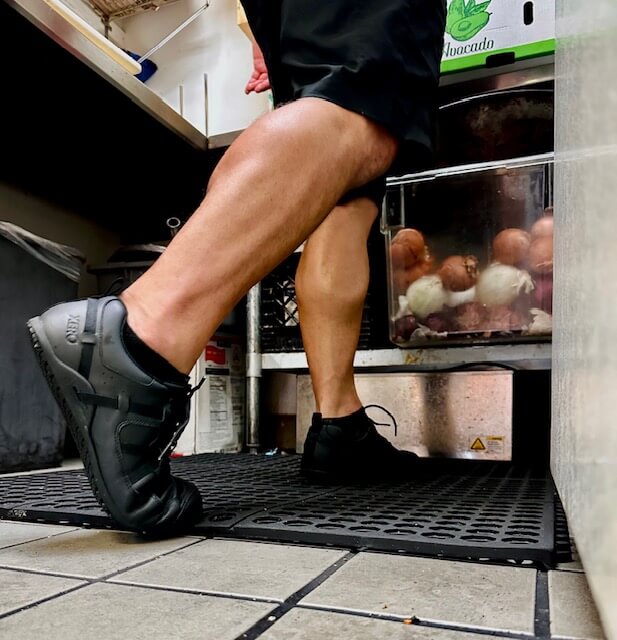
How Food Service Workers Can Find Comfortable Shoes
Food service workers spend long hours standing and moving around, which puts big demands on their feet. Whether you work in the kitchen or wait tables, your shoes should provide comfort during your shift. Having strong, healthy feet that feel good at the end of a shift starts with picking the right shoe. You're about to discover that what most people think are the best shoes for service workers, could actually be the cause of the foot, knee, hip, and back issues that you feel at the end of a double. Then you’ll find the (possibly surprising) best shoes for food service and restaurant workers. What is The Best Shoe for Restaurant Workers? The ideal shoes for service industry workers go beyond simply providing comfort. They are shoes designed to enhance your performance in fast-paced and dynamic food service environments and, ideally, leave your feet and the rest of your body feeling good at the end of the day. The best shoes for food service workers have the following qualities: Non-slip: Slip and fall accidents are the most common injury among kitchen staff, due to contact with wet, slippery, and greasy surfaces. Employees should have a good pair of slip-resistant shoes that have tread for increased grip and traction. Comfortable: For food service employees working long shifts and on their feet all day, shoes should offer natural comfort. Servers, in particular, will rely on comfortable shoes as they walk from table to table. But, as you'll see, genuine comfort may come from a different source than you think. Lightweight: This one is simple. The heavier the shoe, the more energy you use to move your legs. The lighter the shoe, the better you can feel. Durable: Service workers wear shoes for long shifts, and for months at a time. Long-lasting shoes will cost food service employees less in the long run, by not having to frequently get replacements. Protective: shoes must protect your feet from all kinds of spills and other accidents. Easy to clean: Whether you're doing customer service or food preparation, your shoes can get messy fast. You need to be able to clean them after stepping on dropped food items or spilling Table 5's drinks on yourself. So what kind of work shoes offer all these features and even some additional benefits? Contrary to what many people believe, but now thousands of service workers have discovered, barefoot shoes give you all the features and benefits above. I’m a chef and I spend all day on my feet. I’ve tried everything from clogs, boots, memory foam, you name it. I wear a minimalist / barefoot shoe to the gym and I was thrilled that there is a version I could wear to work. Light, comfortable, easy for a 12-14+ hour day. These are hands down my favorite shoes and I have been telling everyone that will listen that they should try them. Why Barefoot Shoes for Food Service Staff? Many food service workers may have heard of “barefoot shoes”, but may not understand how they differ from traditional shoes and why those who’ve made the switch will never switch back. Barefoot shoes give restaurant and food service industry workers: Natural comfort. Working in food service, you’ll need comfortable shoes as you move around or carry heavy plates. Traditional shoes have narrow toe boxes that cause pressure and discomfort. Barefoot shoes feature wider, foot-shaped toe boxes that let your toes wiggle and move freely, offering maximum comfort and improved balance and stability. Proper posture. Shoes with a thick sole can affect your balance by elevating your center of gravity and reducing sensory feedback you receive touching the ground. Barefoot shoes have a thin, protective sole that keeps your foot completely level to the ground, letting your body have natural posture. Agility and mobility. You have over 200,000 nerve endings in each foot! This is so your brain can feel what you're stepping on or in, and then tell your body how to move effectively and efficiently. Typical shoes with thick and stiff soles block your feet from being able to feel the ground beneath you. Food service jobs demand quick movements, precise footwork, and the ability to navigate crowded spaces. Barefoot shoes, with their thin and flexible soles, offer a heightened proprioception and sensory feedback to make you more nimble. Lightweight. Barefoot shoes weigh much less than anything else you've put on your feet, so you're spending less energy throughout your shift. Imagine coming home from doing a double and forgetting that your shoes are even on your feet because they're so comfortable and lightweight. The Perfect Shoe For Food Service Employees Introducing The Prio All Day SR The Xero Prio All Day SR is a non-slip barefoot shoe worn by many in the food service industry. Food service or restaurant employees – from chefs and cooks to waiters and bussers – will love the feel of these shoes. That’s why America's number one barefoot shoe company made this specific shoe, at the request of thousands of food service workers. Here are some great features that the Prio All Day SR offers: A wider, foot-shaped toe box that lets your toes spread, relax and move freely Zero heel-to-toe drop for proper posture Thin, flexible sole for enhanced balance, agility, and mobility Non-slip tread for grip on wet, oily, and slippery surfaces, so chefs, food prep and other kitchen workers better avoid the risk of a slip and fall accident. Durable black leather is protective, easy to clean, and matches any outfit Lightweight. A men’s size 9 is 9.1 ounces per shoe, and a women’s size 7 is 7.5 ounces per shoe. They are so light, you won’t even notice you have them on during your shift! Don’t just take our word for it… Food service and restaurant staff members rely on wearing the Prio All Day SR: I bought these shoes for waiting tables. My last pair of shoes had me barely able to walk after the ride home from work. My first day with my all day Prios after returning home from a 13 hour double and I did jumping jacks! I have been doing several things in my life, living barefoot while guiding students at a survival school, a ballet dancer as a child/teen, and every position you can think of in a restaurant for the past 26ish years, and these shoes are the best I have EVER had. I’m a chef de partie in a restaurant and I ordered these shoes to use as a kitchen shoe. Kitchen shoes have to be waterproof and anti-slip and these are great. I just had to get used to that more leather feeling than the breathability of other xero shoes. But once they break in they're extremely comfortable and it's easy to forget you have them on. A great shoe for someone with a job like me. Read more reviews about the Prio All Day SR from men and women! Stay Comfortable and Safe Wearing Barefoot Shoes Wearing barefoot shoes, you can keep working those long shifts and stay on your feet for hours on end. The Prio All Day SR has everything you need in a food service shoe. Your feet and body will thank you! Prio All Day SR Men | Prio All Day SR Women
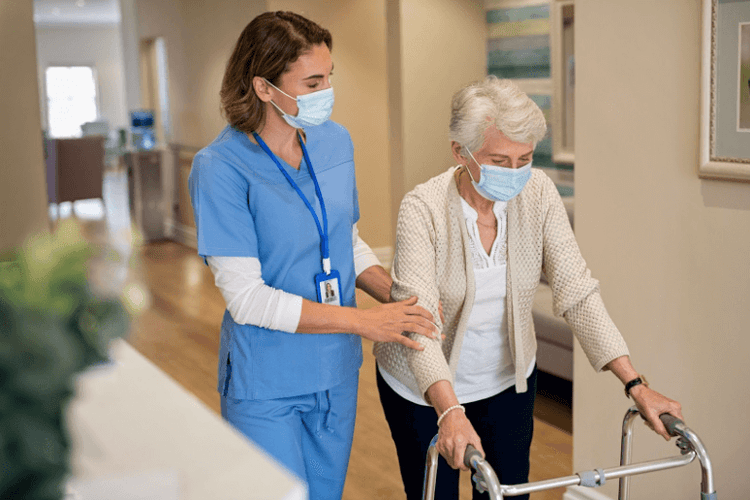
Barefoot Shoes for Nurses - Xero Shoes
Are Barefoot Shoes The Best Shoes For Nurses? 3 Reasons To Trying Going Minimal As a nurse, you understand the importance of wearing good shoes for the well-being of your feet and legs. You’re on your feet for long hours, moving from patient to patient, and the last thing you want is to end up with sore feet at the end of the day. But what if we told you that your feet could feel more comfortable at the end of the day by getting as close to barefoot as possible and wearing minimalist shoes? Don’t just take our word for it. Here’s what some nurses have to say about their experience with barefoot shoes: “I am a 60 year old active nurse and have been on my feet my entire life. These are by far the most comfortable brand of shoes I have ever experienced. I will never go back to structured shoes.” - Nancy Clough “I love the way these shoes feel. I am a nurse and walk quite a bit. I have not had any problems with my feet hurting after a 12 hour shift. The shoes have felt comfortable when working out as well.” - Sean Ancheta-Reinhardt “I love these shoes. I use them as a nurse and I’m on my feet all day and I could not ask for anything more comfortable! Highly recommended” - Bryony Retter In this blog post, we'll discuss what healthcare workers need to know about barefoot shoes in order to have happy, healthy feet at work and home. What Shoes Make Sense For Nurses? Before we explore the benefits of barefoot shoes, let's first take a look at what shoes make sense for nurses. It is no secret that nurses often experience foot discomfort. As a nurse, you need to be able to move quickly and efficiently to care for your patients during long work days. You expect a lot out of your shoes, so you need shoes that: Offer comfort for your long shifts whether you are standing, walking, or running around Provide traction and stability. Shoes with good grip help to prevent slips and falls Some nurses want a breathable upper to keep your feet cool and dry, while others many want shoes that are protective of spills Are easy to clean and maintain, as healthcare settings can be messy What’s Wrong with “Normal” Shoes?” Before diving into the specific benefits of barefoot shoes for nurses, it’s worth considering why someone would choose to ditch traditional shoes in the first place. Traditional shoes: Have a narrow, pointed toe box that squeezes your toes together, which can lead to foot problems and balance issues Have excessive padding, which mutes the feedback the nerves in your feet send to your brain… which interferes with mobility Have stiff soles which limits your feet’s natural movement, again impacting balance and agility. Have a raised heel, which negatively affects your posture, putting strain on your ankles, knees, hips, and back Weaken the feet over time and lead to a reliance on external support, rather than allowing the feet to strengthen and become their own support system Are heavier, which will weigh you down over the course of a day What Nurses Should Know About Barefoot Shoes Barefoot shoes address all of those issues.This type of shoe design: Has a wider, foot-shaped toe box to allow your toes to spread naturally Is low to the ground for balance, mobility, and agility Has a non-elevated heel (“zero-drop”), so it doesn’t mess with your posture Is flexible and allows for natural movement Allows your feet to strengthen and become their own support Is so lightweight, many wearers forget to take them off at the end of the day, and often forget they’re even on! 3 Benefits of Barefoot Shoes for Nurses They are “Zero-Drop” Traditional shoes often have a significant difference in height between the heel and the toe, known as the "heel-to-toe drop." This drop can be as much as 12 millimeters or more for traditional shoes, which can put strain on your ankles, knees, hips and back. We know high heels do this, but even shoes with a small drop can do the same thing. Barefoot shoes, on the other hand, have a uniform sole height without any variation between the heel and the toe, also known as “zero-drop”. These shoes are designed to allow for a more natural posture and gait, promoting better alignment and balance in the body. Your Feet Become Their Own Support Typical shoes have soles that don’t allow your feet to move or toes to spread. Wearing typical shoes like wearing a cast on your foot,restricting your foot’s natural movement, reducing joint mobility, and causing the muscles to weaken the longer you wear them. Research by Katrina Protopapas showed that adding arch support in the shoes of healthy individuals reduced the muscle mass and strength in their feet by up to 17% in just 12 weeks. Imagine what happens over even more time. In contrast, barefoot shoes don’t provide any external arch support, which might seem counterintuitive to those who believe they need it. However, the muscles and tendons in our feet are designed to support the arch naturally. Research by Dr. Sarah Ridge shows that merely walking in barefoot shoes built foot strength as much as doing a foot strengthening exercise program. They Are Lightweight Traditional shoes can be heavy and cumbersome, especially for healthcare workers who spend long hours on their feet. Barefoot shoes are lightweight, which makes them an ideal option for nurses and other healthcare workers. This design allows you to be lighter on your feet instead of wasting energy dragging your shoes from patient to patient. They are so lightweight that some people even forget they are wearing them! You may even forget to take them off! Barefoot Shoes Vs. Minimalist Shoes for Nurses Nurses may have heard the terms barefoot shoes and minimalist shoes used interchangeably, but they are not the same thing. Here’s a quick breakdown of the differences between the two: Barefoot shoes are the closest thing to being barefoot, allowing your feet to move and flex naturally. Minimalist shoes are meant to be lighter, more flexible, and have somewhat less cushioning and heel lift than a typical shoe. However, many companies claiming to sell minimalist shoes actually sell “partial minimalist shoes'', which can be worse for your feet than both “barefoot” and “typical” shoes. According to this study by Irene Davis, “runners in partial minimal shoes sustained more injuries than those running in true minimal or traditional shoes.” They are typically too narrow and have too much lift and cushioning, meaning you can’t get the feedback you need to walk naturally. At Xero Shoes, we provide truly minimalist shoes that feature a wide toe box, no unnecessary cushioning, and an extremely flexible sole that lets you safely feel the ground while offering a layer of protection. Xero Shoes for Nurses For nurses who are looking for a good pair of barefoot shoes, try our slip resistant Prio model. The Prio is a minimalist shoe that still offers a removable 2mm insole which you can keep in while you adjust the barefoot feeling, or remove if you want a “closest-to-barefoot” experience. It is lightweight, flexible, and durable and, like all Xero Shoes, comes with a 5,000 mile sole warranty, making it the perfect choice for healthcare workers who need to be on their feet for long hours. That said, we have many nurses who wear many of our styles as well. Browse all the shoes from Xero Shoes. The information in this post does not take the place of medical advice. Only your doctor can provide advice, diagnosis, and treatment. Always consult a qualified health provider, such as a physical therapist, if you have questions about your health.


